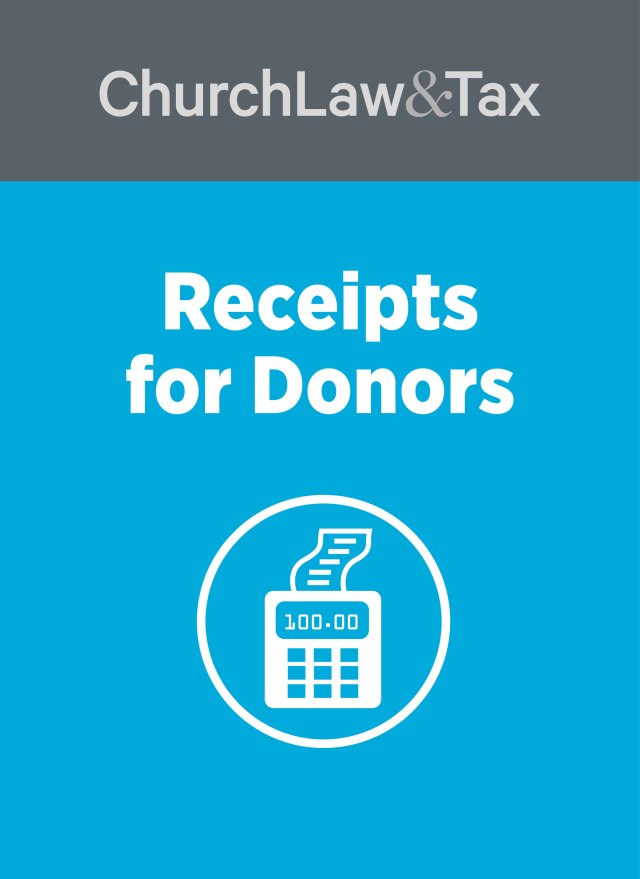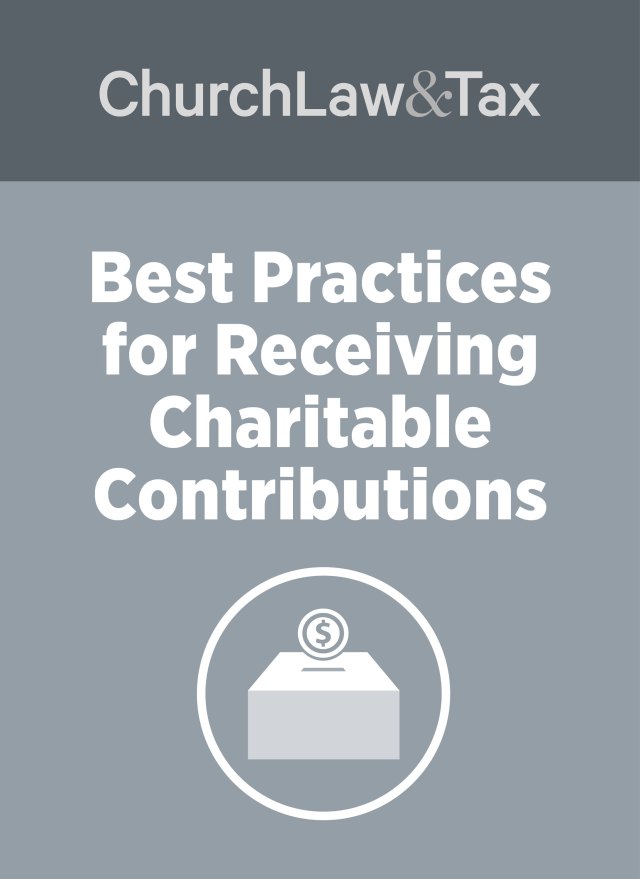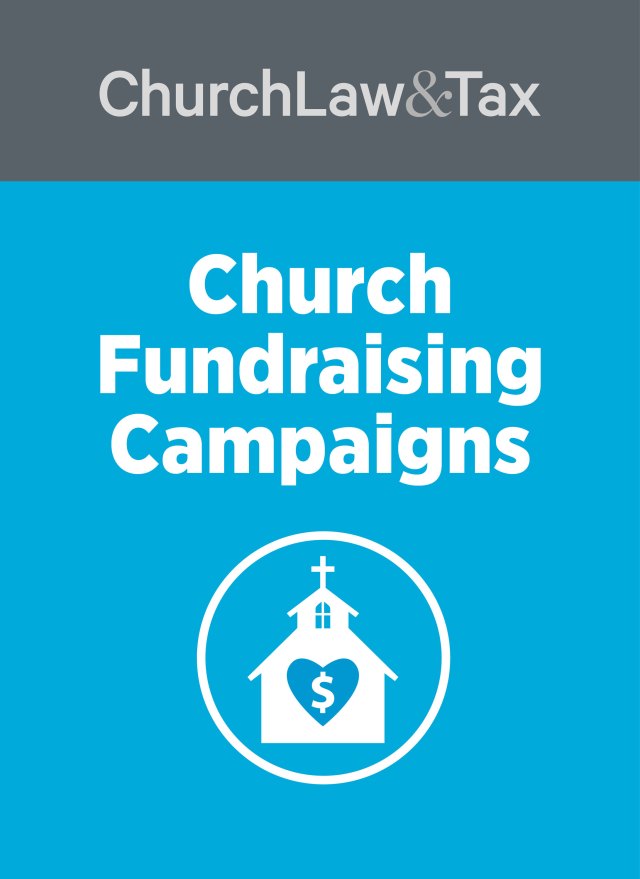IRS Letter Ruling 200250029
Background “Designated contributions” are contributions made to a church for a specified purpose. In most cases, a donor either designates a specific project (such as the church building fund or missions fund) or a specific individual (such as a missionary, student, minister, or needy person). If the designated purpose is an approved project or program of the church, the designation ordinarily will not affect the deductibility of the contribution. An example is a contribution to a church building fund.
Example. A church establishes a “new building” fund. Bob donates $500 to the church, with the stipulation that the money be placed in the “new building” fund. This is a valid charitable contribution, and may be treated as such by the church treasurer.
If a donor stipulates that a contribution be spent on a designated individual, no deduction ordinarily is allowed unless the church exercises full administrative control over the donated funds to ensure that they are being spent in furtherance of the church’s exempt purposes. The problem with a contribution that designates a specific individual is that it is not clear whether the donor intended to benefit the individual or the church.
The tax code specifies that only contributions made “to or for the use of” qualified charitable organizations, including churches, are deductible by donors. Gifts made directly to individuals are not deductible. However, contributions to individuals in some cases are deductible if they were “for the use of” a qualified organization. Contributions to foreign missionaries under the control and supervision of a religious organization often are deductible on this basis. The contribution is not made “to” the organization, but it is made “for the use of” it. Likewise, contributions are often made payable to a church, with a stipulation that they be distributed to a specified individual. Common examples include Christmas gifts for a minister, scholarship gifts to a church school, and contributions to a church benevolence fund. The deductibility of these “designated contributions,” along with contributions made to foreign missionaries, is considered below.
A recent ruling The IRS was asked to issue a ruling in a case involving the deductibility of a designated contribution made to a charity that was organized to promote music. The charity accomplishes its charitable purpose by hosting composer events, placing composers in residencies with professional arts institutions, funding recordings of new American music, and by entering agreements with professional arts institutions to commission works.
A married couple (the “donors”) informed the charity of their desire to support the work of a particular composer (the “composer”), and a few months later they donated a substantial amount to the charity. At the time of the contribution, the charity did not make any commitment to use the funds to commission the work of the composer, and there was no representation that the funds would be used for that purpose. The charity informed the donors that the funds would be used at its discretion in furtherance of its charitable purpose, and the donors understood this.
In a letter to the donors, the charity thanked them for the contribution. The letter stated that there “can be no assurance that the funds contributed will be used to support the work of the composer” and that the funds would be used by the charity “in carrying out its charitable purpose and will not be returned to the donors.”
A short time later, the charity paid the composer a “commissioning fee” to compose a new musical work, and it also agreed to reimburse the expenses incurred by the composer in appearing at the premier of his work. The composer agreed to complete a musical work of specified type and duration in a timely manner.
The charity asked the IRS to issue a ruling that the donors’ contribution to the charity was tax-deductible, and was not affected by the donors’ “earmarking” of their contribution for the support of the composer.
The IRS began its ruling by noting that the tax code allows a tax deduction for charitable contributions, and that a charitable contribution “is a contribution or gift to or for the use of an organization operated exclusively for charitable purposes.” It then summarized seven previous cases and rulings that were relevant to the question before it:
Case 1. A taxpayer made payments to a boys’ school on behalf of a ward of the Illinois Children’s Home and Aid Society. The court held that the payments were not contributions to or for the use of the charitable organization, but were gifts for the benefit of a particular individual. S.E. Thomason v. Commissioner, 2 T.C. 441 (1943).
Case 2. An individual gave money to a university, requiring that it use the money to fund the research project of a particular professor. The university had no discretion over the use of the funds. The IRS ruled that the university was a “conduit” only, and that the real donee was the professor. As a payment to an individual, the gift was not deductible. IRS Revenue Ruling 61-66 (1961).
Case 3. A donor made a cash contribution to a missionary fund that was intended to reimburse missionaries for approved expenses not covered by amounts received from the missionaries’ parents, friends, relatives or by personal savings. The donor’s son was a missionary and was eligible to receive reimbursements from the fund. Most of the son’s support was provided by the donor directly to his son, and the donor had previously contributed to the fund. The IRS ruled that if contributions to the missionary fund were earmarked by the donor for a particular individual, they were treated, in effect, as gifts to the designated individual and were not deductible. However, the ruling allowed a deduction if it is established that the donor intended the gift for the organization and not as a gift to an individual. The test in each case is whether the organization has “full control of the donated funds, and discretion as to their use, so as to ensure that they will be used to carry out its functions and purposes.” The ruling also states that, unless the taxpayer’s contributions to the fund were distinctly marked by him so that they could be used only for his son or were received by the fund pursuant to a commitment or understanding that they will be so used, they could be deducted by the taxpayer. IRS Revenue Ruling 62-113 (1962).
Case 4. A corporation established a scholarship program. The corporation selected universities from which the corporation drew a substantial number of its employees. The universities selected the recipients of the scholarships in their own discretion, and there was no employment commitment between the corporation and the scholarship recipients. The IRS ruled that for purposes of determining that a contribution is made to or for the use of a tax-exempt organization rather than to a particular individual who ultimately benefits from the contribution, the organization must have full control of the use of the donated funds, and the contributor’s intent in making the payment must have been to benefit the organization itself and not the individual recipient. IRS Revenue Ruling 68-484 (1968).
Case 5. Students at a religious educational institution had their tuition paid by “sponsors.” In many cases the sponsor was the student’s parent. The sponsors signed a commitment form that set the contribution amount, the payment schedule, and indicated the names of the sponsor and the student. There was also a space provided on the payment envelopes for the student’s name. The commitment form provided that contributions were nonrefundable and that the use of money was “solely at the discretion” of the organization. The IRS denied a charitable contribution deduction because deductibility requires both full control by the organization and the intent by the donor to benefit the charity itself and not a particular recipient. The commitment form and the envelopes indicated that the payments were designated for the benefit of particular students. IRS Revenue Ruling 79-81 (1979).
Case 6. A taxpayer claimed a charitable deduction for payments to a college. In a letter accompanying a payment the taxpayer stated, “I am aware that a donation to a Scholarship Fund is only deductible if it is unspecified, however, if in your opinion and that of the authorities, it could be applied to the advantage of Mr. Robert F. Roble, I think it would be constructive.” A federal court stated, “It is clear from the record that the donor intended to aid Roble in securing an education and that the payments to the college were earmarked for that purpose.” There was no indication that a “scholarship” was ever awarded Mr. Roble by the college; the payments were merely applied to his account. Therefore, the court concluded that the donor intended to benefit the individual and not the institution and denied the charitable deduction. Tripp v. Commissioner, 337 F.2d 432 (7th Cir. 1964).
Case 7. Despite the listing of the names of specific missionaries on the checks donated to a missionary fund and the apparent sending of funds by the mission to the particular missionaries, the Tax Court found that the donor’s intention was to donate the funds to the common fund of the mission to be used as the mission saw fit. The court reached this finding based in part on the missionary fund’s policy that it have exclusive control of both the administration and distribution of the funds contributed, and the finding that the donor intended that the contributions go into a common pool to be distributed on an equitable basis among all missionaries as described in the fund’s publications. The court, quoting Revenue Ruling 62-113 (summarized above) stated, “Unless the taxpayer’s contributions to the fund are distinctly marked by him so that they may be used only for his son or are received by the fund pursuant to a commitment or understanding that they will be so used, they may be deducted by the taxpayer.” Peace v. Commissioner, 43 T.C. 1 (1964).
What the IRS concluded. The IRS concluded that the donors’ contribution to the charity was tax-deductible, despite their expressed interest in benefiting a specific composer (and the charity’s use of the donated funds for that same composer). The IRS observed,
A charitable contribution deduction is not allowed if a charity is used as a conduit, and a payment to a qualifying charity is “earmarked” or designated for the benefit of a particular individual, even if the individual is member of the class the charity is intended to benefit [citing Case 1]. The organization must have control and discretion over the contribution, unfettered by a commitment or understanding that the contribution would benefit a designated individual [citing Case 3]. The donor’s intent must be to benefit the organization and not the individual recipient [citing Case 4].In this case donors made a payment to a recognized charity, and expressed an interest in supporting the work of a particular composer. This expression of interest raises the issue of whether the contribution was impermissibly earmarked for this composer. No commitment or understanding existed between the donors and charity that the contribution would benefit the composer. The donors understood that any funds contributed to the charity would be distributed according to the discretion of the charity, and that the charity’s officers select the composers.
We believe that the instant case is similar to [Case 3 and Case 7]. Although the donors expressed an interest in the selection of a particular individual to compose a work for the charity, the common understanding was that the contribution would become part of the general funds of the charity, and would be distributed in the manner chosen by the charity’s officers. Therefore, the contribution by the donors to the charity was not impermissibly earmarked for the composer, and therefore is a charitable contribution.
Relevance to church treasurers. The ruling has direct relevance to church treasurers, since it provides useful information on the correct handling of contributions that suggest or recommend a particular recipient. This issue frequently arises in churches when members want to donate funds for a particular needy person or family, or a student or missionary. In the past, the IRS has been adamant that such contributions do not qualify as charitable contributions. This ruling suggests that the IRS may be taking a more flexible approach in such cases, if the following conditions exist:
(1) The church has control and discretion over the contribution, “unfettered by a commitment or understanding that the contribution would benefit a designated individual.”
(2) No commitment or understanding exists between a donor and the church that a contribution will benefit a person or persons specified by the donor.
(3) The donor understands that any funds contributed to the church would be distributed according to its discretion.
Note that a “commitment or understanding” is not the same as a mere “expression of interest” in a particular individual. A commitment or understanding connotes some compulsion on the part of the church to distribute donated funds to a person designated by the donor, and in that sense removes any control by the church over the funds. As a result, such a donation was not “to or for the use of” the church. On the other hand, mere “expressions of interest” by the donor do not bind a church to distribute donated funds to the person designated by the donor. Instead, the church is left with the discretion to determine how the donated funds are spent, and may completely disregard the donor’s “expression of interest” in a specified individual.
The key language in the IRS ruling is this: “Although the donors expressed an interest in the selection of a particular individual to compose a work for the charity, the common understanding was that the contribution would become part of the general funds of the charity, and would be distributed in the manner chosen by the charity’s officers. Therefore, the contribution by the donors to the charity was not impermissibly earmarked for the composer, and therefore is a charitable contribution.”
The IRS ruling is also helpful to church treasurers because of its summary of 7 prior cases and rulings, all of which address the issue of designated contributions. Familiarity with these cases can be very helpful to church treasurers.
One final point. The IRS ruling reviewed in this article was a private letter ruling. As such, it cannot be used as precedent in other cases. However, such rulings are commonly viewed by tax attorneys are indications of the thinking of the IRS on specific issues, and in this sense they are relevant.
This article first appeared in Church Treasurer Alert, April 2003.




